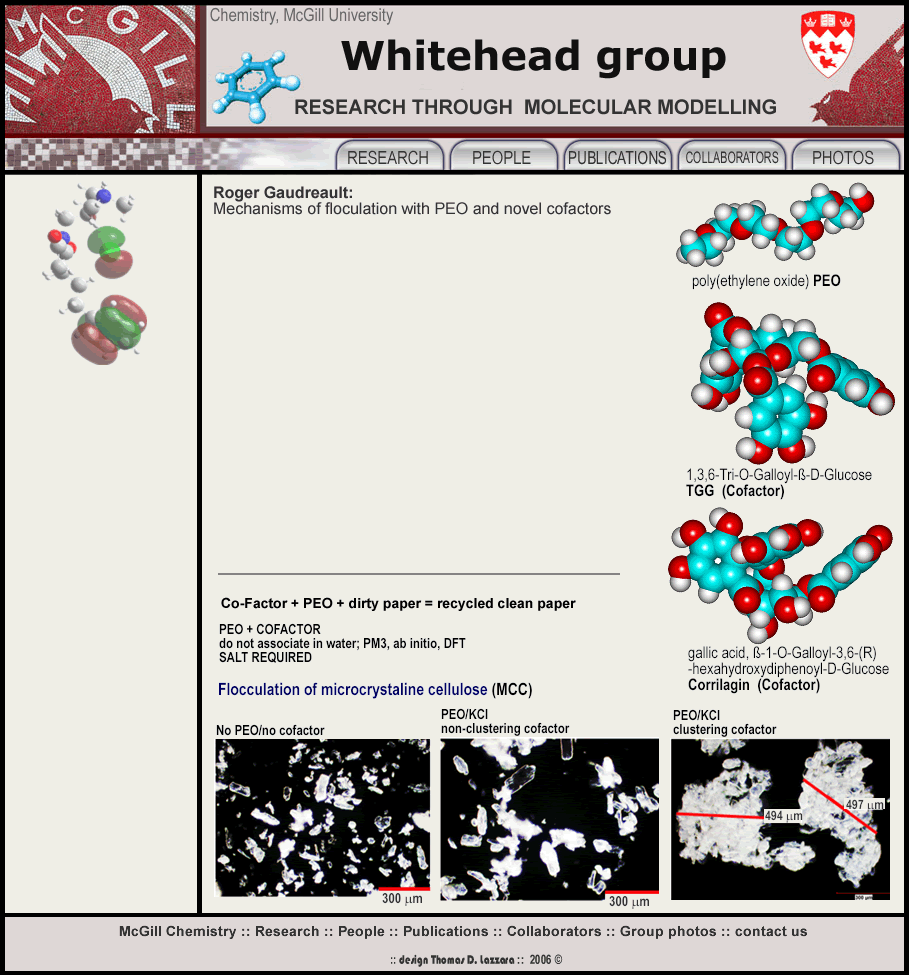In papermaking, retention aids help incorporate fines and fillers into
paper. One example is PEO + cofactor. Without a knowledge of the
basic mechanism, costly trial-and-error runs have to be performed.
Molecular Mechanics (MM) and PM3 Semi-empirical calculations are used to
study flocculation of cellulose fibre fines.
The interactions between non-ionic PEO, with two model cofactors, corilagin
and TGG, showed that the DLMO covers the complexes.
DG, DS and DH show no
PEO/cofactor complexes. The PM3 results show that the main mechanism
of complexation is not hydrogen bonding in water.
The flocculation of MCC with PEO and with various cofactors were studied
using Photometric Dispersion Analysis (PDA). PEO-corilagin interactions
were studied by Isothermal Titration Calorimetry (ITC), liquid state proton
Nuclear Magnetic Resonance (1H NMR) and carbon 13C NMR.
The ITC and NMR results agree with calculations: PEO/corilagin complexes
do not form at room temperature. PEO and corilagin only associate in the
presence of salt, confirmed by NMR. Cofactors can cluster PEO
(clustering cofactors) and some do not (non-clustering cofactors).
Whitehead group
Contacts
address:
Prof. M.A. Whitehead
Department of Chemistry
McGill University
Otto Maass Chemistry Building,
801 Sherbrooke St. West,
Room 352,
Montreal, Quebec,
H3A 2K6, Canada.
Phone:
office: (514) 398-6239
lab: (514) 398-6905
fax: (514) 398-3797
email:
tony.whitehead@mcgill.ca
